Billionaire income
Early in the morning, Mr. Nguyen Trong Hai (Phuoc An town, Krong Pac district, Dak Lak) was busy in the garden helping the workers harvest, process, and pack lychees into boxes in time for the bus to Ho Chi Minh City.
“Recently, we have received feedback from some purchasing units about people harvesting lychees too early, causing poor quality. Many batches of lychees are still green and very sour, they cannot sell them so they do not dare to import more. People need to pay attention to this because it will affect the reputation and brand of lychees in the area, and is also the reason why the price of lychees this year has decreased compared to before” Mr. Nguyen Thanh Son - Chairman of the Dak Lak Fruit Tree Association
Mr. Hai’s lychee garden is over 3 hectares wide with over 1,200 U Hong lychee trees, planted 15-20 years ago. This garden is assessed by the leaders of the Department of Agriculture and Rural Development (DARD) of Krong Pac district as the oldest garden in the area.
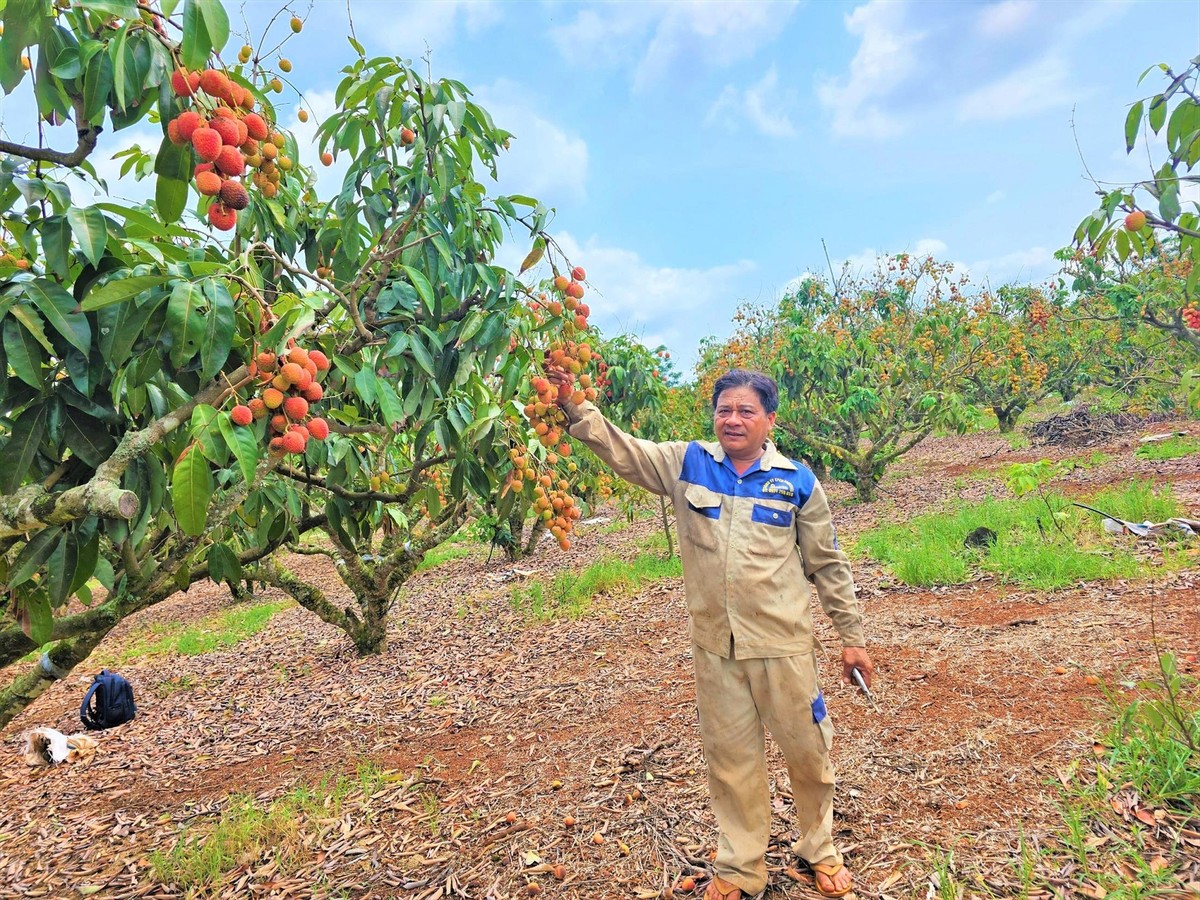 |
| Mr. Hai next to the lychee garden that is being harvested. |
Using pliers to trim the cracked lychees hanging from the trees, Mr. Hai said: “The lychees are like that due to thermal shock when they encounter the first rain of the season. This phenomenon only occurs during the first rain, the lychees will not crack again in the following rains. The rate of cracked fruit is quite high, fortunately this year the trees have a lot of fruit so it compensates. I have to tell the workers to remove all of them, otherwise the whole box will be ruined.”
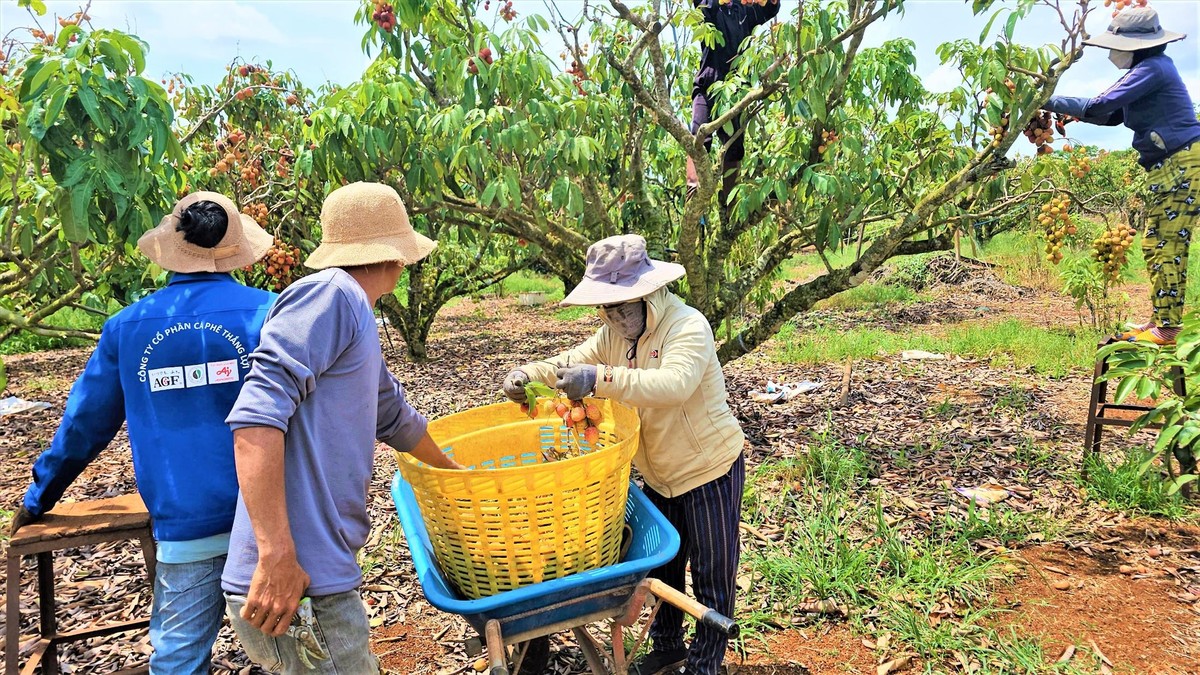 |
| Workers are harvesting lychees. |
Wiping the sweat rolling down his sunburnt face, Mr. Hai added that on average, 1 hectare yields 15-20 tons. With a selling price of 25-30 thousand VND/kg, after deducting all investment costs, Mr. Hai earns a profit of 350-400 million VND/hectare.
The profit from lychee trees is quite high. However, according to Mr. Hai, this type of tree is quite difficult to grow, the output is only limited to selling fresh fruit, so it is also risky. “There was a year when my lychee garden did not bear fruit and lost everything. There was a time like the COVID-19 pandemic when the lychees could not be sold and the whole garden fell. I once thought about processing this fruit deeply, but I could not do it alone,” Mr. Hai pondered.
Talking about his connection with lychee trees, Mr. Hai said that 20 years ago, he enjoyed the sweetness of lychee in the Central Highlands. “At that time, some people from the North came to Dak Lak and brought and planted lychee trees in front of their houses. This made me curious and the idea of growing cold-weather specialties in this sunny and windy land appeared,” Mr. Hai recalled.
With 3 hectares of land, Mr. Hai planted enough lychee varieties and finally chose a suitable variety called U Hong lychee. “The most difficult thing is how to make the lychee tree flower and bear fruit. Because this type of tree only flowers and bears fruit at low temperatures (from 14-17 degrees Celsius). The North has many cold spells, and the Central Highlands, only at the end of December. Lychee growers must seize this opportunity, otherwise they will lose their crop,” Mr. Hai shared.
Thanks to lychee trees, Ms. Hoang Thi Thu Huong's family (Dak Dro commune, Krong No district, Dak Nong) has changed their lives. Ms. Huong said that before, her family grew cashew trees, but the economic efficiency was very low. In the best harvest year, the family only earned about 100 million VND, so they considered switching crops.
After visiting many places with many different models, she decided to replace the cashew tree with the U Hong lychee variety in 2014. Because it is a new tree, she and her husband are present in the lychee garden almost every day to take care of and observe the growth of the tree. She also diligently researched and used biological products, limiting the use of chemicals.
After 4 years of planting and caring for the trees, her family has reaped sweet fruits. With 3 hectares of lychee, each year, her family harvests about 60 tons of fruit. With a selling price of 30,000 VND/kg, after deducting the costs of care and fertilizer, Ms. Huong's family earns nearly 1 billion VND/year.
Thanks to lychee trees, her family’s life is more stable. In addition to the income from selling lychees, Ms. Huong also grafts branches, sells seeds and shares her growing experience with many people.
Avoid hot development
Mr. Nguyen Huy Hoang - Head of the Department of Agriculture and Rural Development of Krong Pac district said that lychee trees have been grown in the area for many years. The whole district currently has nearly 200 hectares of lychee. This type of tree brings high profits, second only to durian (grown a lot in Krong Pac district). However, Mr. Hoang emphasized that lychee trees only differentiate flower buds when the temperature drops and care also requires technique and experience. In addition, the locality does not have a deep processing facility, the product is sold on the market in the form of fresh fruit. Therefore, the locality has not recommended people to expand the area, but focus on care to improve the quality of the crop.
Mr. Doan Gia Loc, Head of the Department of Agriculture and Rural Development of Krong No district, also assessed that lychee trees bring profits many times higher than coffee. In Krong No district, there are about 50 hectares of lychee, with an average yield of 12-15 tons/hectare. With an average selling price of 30,000 VND/kg, the production value of 1 hectare of lychee is about 400 million VND. However, the agricultural sector recommends that people be cautious when converting and expanding the lychee growing area, to avoid supply exceeding demand and breaking the planning.
Mr. Nguyen Thanh Son - Chairman of the Dak Lak Fruit Tree Association said that the whole province grows nearly 2,600 hectares of lychee, of which the area currently being harvested accounts for about 50%. According to Mr. Son, Dak Lak has the potential to develop lychee trees, but is facing barriers when the area is still fragmented and small; there is no consensus on the production process. Lychee trees have not been promoted or branded much. Currently, there are only a few cooperatives and cooperatives linking production. The locality also does not have a deep processing facility. "Last year, a large fruit exporting enterprise came to Dak Lak to learn about lychee trees, however, the raw material area is fragmented, the care process is not uniform, making it impossible for them to discuss exporting with foreign customers," Mr. Son informed.
According to the Chairman of the Dak Lak Fruit Association, the locality needs to address the above limitations, develop growing area codes so that lychee trees can expand their export routes and develop sustainably; otherwise, when supply exceeds demand, they will encounter the "mistake" of avocado trees.
As for the Dak Lak Fruit Association, it is acting as a bridge to support people to link up into cooperatives to have a large enough raw material area; guiding the standard and uniform care process to improve product quality. At the same time, the association also connects with purchasing enterprises to help people have more ways to consume products. Regarding issues such as deep processing, building growing area codes, etc., it is necessary for the government to pay attention and create conditions for lychee trees to develop in the right direction, improving efficiency and quality, Mr. Son added.
tienphong.vn


![[Photo] Top players gather at the 2025 Nhan Dan Newspaper National Table Tennis Championship](https://vphoto.vietnam.vn/thumb/1200x675/vietnam/resource/IMAGE/2025/5/23/9ad5f6f4faf146b08335e5c446edb107)







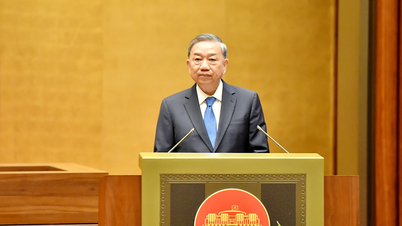



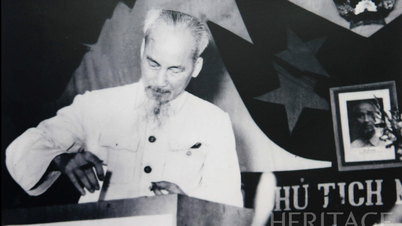


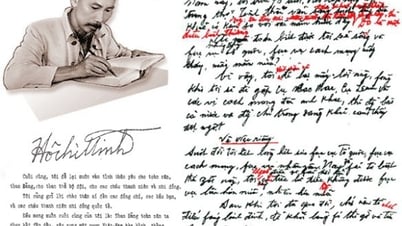







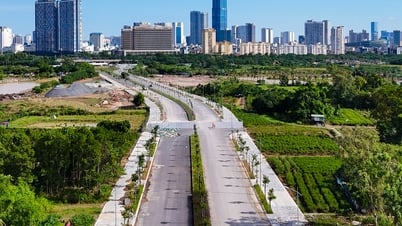






















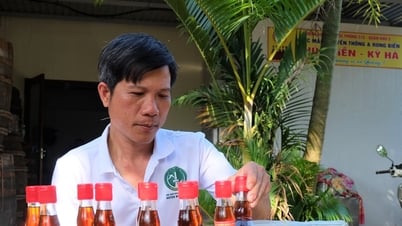






























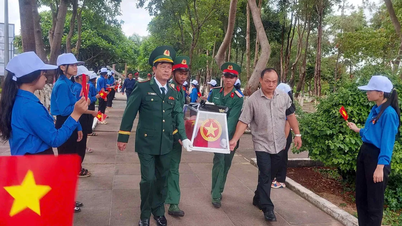
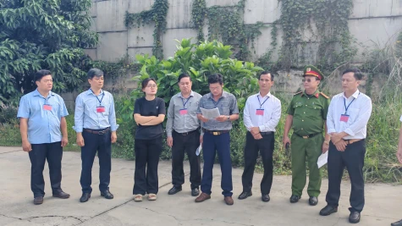













Comment (0)